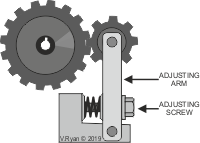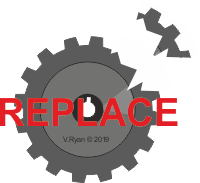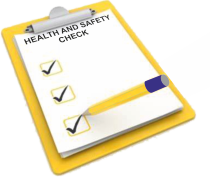V.Ryan © 2019
The proper maintenance of a machine is essentially, if it is to have a trouble free and long useful working life. Without regular maintenance, a machine could literally grind to a halt, or produce inaccurate work pieces and more importantly, become dangerous to use. Regular maintenance and safety checks are a legal requirement.
The machine referenced here as an example, is a centre lathe, used to shape and form metals accurately. In addition to maintenance checks, safety checks should be carried out before a machine is used. The manufacturers instruction booklet, will state maintenance / safety checks that should be carried out, and how often this should take place. Checks, should be recorded and stored, as they can be regarded as legal documents.

Goggles should be available, for the operator to wear during machine use. The goggles should not have a scratched or damaged lens.
The stop and start buttons should be checked to ensure that they work correctly.

This will include:
Check that rotating parts are lubricating with oil / grease, according to the manufacturers instructions. Lubrication helps to prevent corrosion and reduce wear of interlocking / meshing parts. Lubrication promotes the smooth running of a machine.

Adjustments are made to the machine parts that are subject to wear and tear.
Example of adjustable parts:
Gears wear over time. The pressure and gap between the two gears shown opposite, can be adjusted by turning the ‘adjusting screw’, which moves the ‘adjusting arm’, ensuring that gears ‘A’ and ‘B’ mesh together correctly.

This is maintenance that takes place, after a fault has been identified or a part has failed. There will always be times when parts fail or are damaged. For instance, a technician responsible for checking a centre lathe in the morning, before it is used during the day, may spot a damaged guard. He/she will then replace it immediately, or prevent the use of the machine, until the guard is repaired or a replacement arrives. Reactive maintenance means ‘reacting’, when a fault / damage has already occurred.

This is often the best form of maintenance. It is when a potential problem / fault is identified, before it causes a failure. This often occurs during routine maintenance and safety checks. For instance, a technician may be carrying out a daily check on a centre lathe and spot that the oil reservoir needs topping up with oil. The reservoir feeds oil onto the gear system that drives the lathe. Without oil, damage to the expensive gears will take place. Topping up the oil reservoir is ‘proactive maintenance’.
